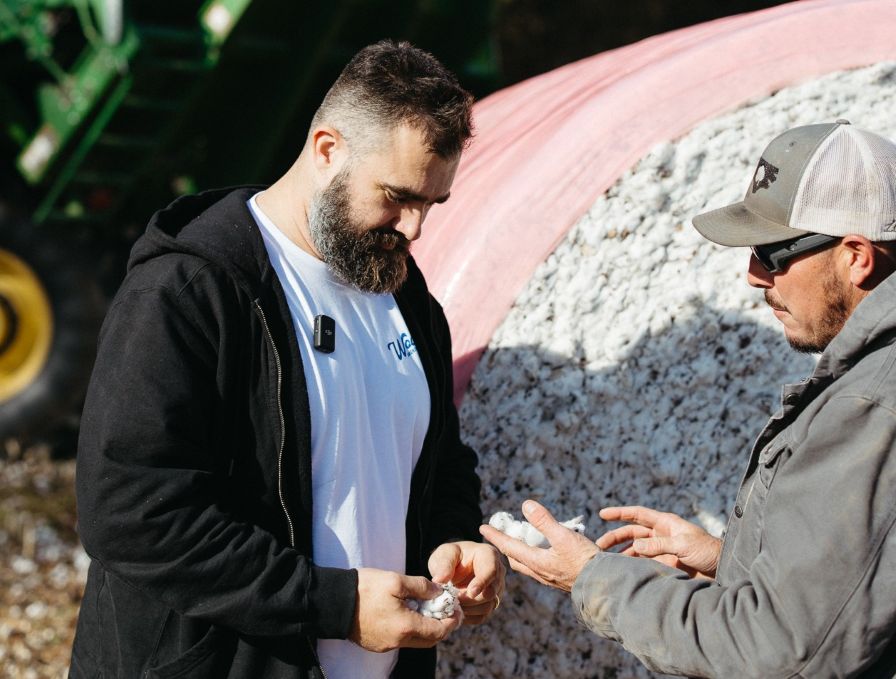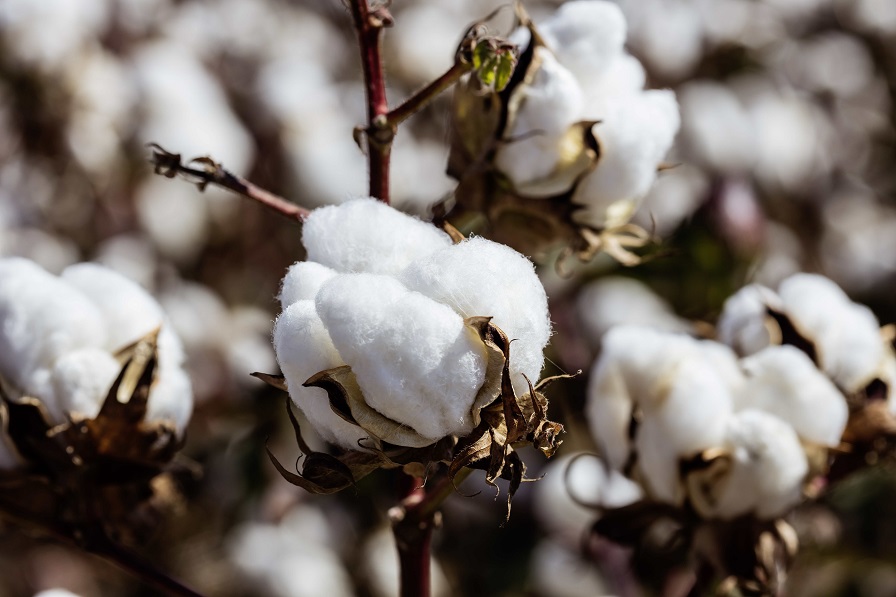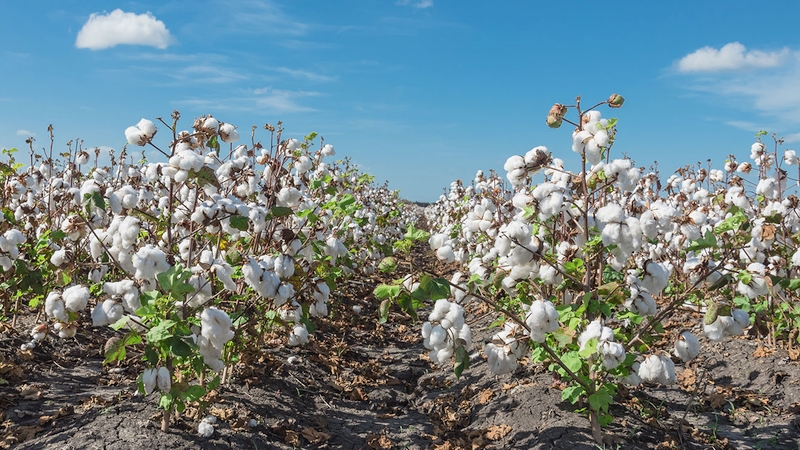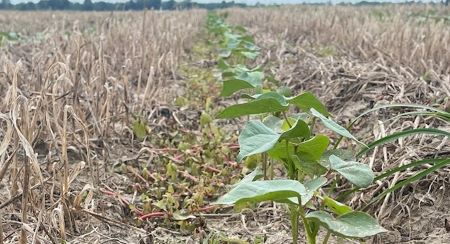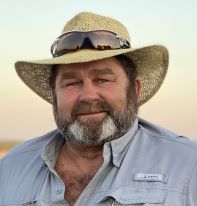Crop Scan Ag Report: Focus Shifts to Early Season Crop Management
It’s pretty much time to put the planters away and focus on weeds, insects – and, in some areas, first PGR applications. Areas that were wet two weeks have dried up enough for fieldwork, while other areas would welcome a bit of rain right now.
Here’s what our contributing consultants had to report for mid-June.
Chad Harrell owns and operates Harrell Agronomic Services in Northeastern North Carolina.
We finished planting and replanting cotton in our area about a week ago. The earliest planted cotton has really started to take off and will need a PGR this week. Moisture is now becoming our biggest concern, as most areas have received little to no rain during the month of June.
Most growers are now focusing on herbicides and our last nitrogen application. As of last week, plant bug pressure has been low with no fields at treatable levels.
We hope to see some much-needed rain at the end of this week.
Wes Briggs consults on cotton, corn, peanuts, soybeans, and small grains for growers in Georgia, Alabama, and Florida.
Crop wise, not a lot has changed in the past two weeks other than the crop is getting bigger. Our oldest cotton was planted on April 18, and we found a few blooms in it today. We still have some cotton in the cotyledon stage that was planted after sweet corn or small grains that has just come up to a stand. Growers are now transitioning off of planting cotton and switching to soybeans.
We’re picking up plant bugs in the older squaring cotton. Plant bugs are sporadic, and we’ve sprayed a few fields, but they’ll be building as the cotton progresses. They’re always one of our key pests. We have some hot spots for spider mites and aphids – nothing at treatable levels, but we’re monitoring those.
Other than that, it’s weed control and fertilization. We’re running as hard as we can getting fertilizer applied and with weed control. We have some cotton getting its first over-the-top post with Xtend or Engenia or Enlist, depending on the technology, while some is already on its second post treatment.
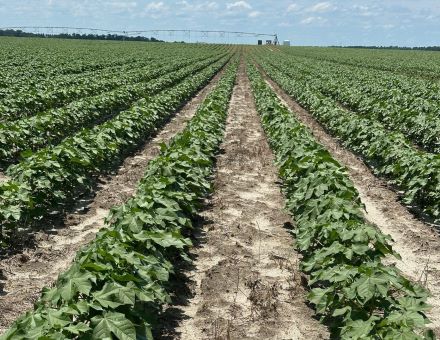 Cotton after two post treatments. Photo: Wes Briggs
Cotton after two post treatments. Photo: Wes Briggs
Overall, cotton seems to be progressing good. It’s made a big change in the past 7-10 days and is starting to really look like cotton. Rainfall has been sporadic. Over the weekend, some places got two inches of rain and some places didn’t get any. It was starting to get pretty dry in spots, but most of the fields I watch are under center pivot and we’re watering as needed. We should have a decent amount of cotton blooming in the next few weeks.
Tucker Miller is a Mississippi-based independent private consultant for cotton, soybeans, corn, peanuts, rice, and vegetables.
All of our cotton is planted and up and running. We have a small amount of acres that were replanted due to a hail storm, but most of our cotton ranges from seven nodes to twelve nodes. We expect to find a bloom in the next week in the oldest cotton.
 Photo: Tucker Miller
Photo: Tucker Miller
Insect pressure has been low up to this point. However, as the corn turns to brown silk, the plant bugs will be pouring in. We have already sprayed a lot of corn edges for this pest.
We are rapidly trying to finish our weed control measures in cotton and get ready to irrigate. It has turned off hot and dry, and we really need a rain. We have a few pivots running now to activate herbicides and fertilizer. Corn and soybean irrigation is in full swing. A rain this week would be a blessing.
We will be applying insecticides and growth regulators this next week as needed.
Hope everyone has a great crop this year.
Mark Nemec is an independent agricultural consultant for cotton, wheat, grain sorghum and corn in the Blacklands and Brazos River Bottom area of Central Texas.
Things have finally started drying out in Central Texas. We’ve had a nice stretch of sunshine and little rain, allowing growers to finally catch up with their weed control in most fields. We still have a few mud holes that we are having to deal with.
Fleahoppers are the main pest we’re dealing with right now. Normally we are done worrying about them by now. But all of the rain in the area has made a lot of natural host plants for them to reproduce in.
A good deal of the cotton is reaching bloom stage and should be past that soon. We still need to be watching the later planted and replanted fields to make sure to keep as much early fruit set as possible.
It’s hard to believe, but we are having to apply PGRs on some fields. When the sun came out and fields dried out, the cotton plants responded quite nicely.
Kerry Siders is Texas A&M AgriLife Extension Agent-IPM for Hockley, Cochran, and Lamb Counties.
Cotton here on the western South Plains of Texas is all across the board from just replanted, to just hailed out, to deciding on the third option for replant – with a small percentage of cotton acres on the other end of the spectrum which are near squaring. One bright spot is that most everyone now has good soil moisture.
I suspect of the many acres just recently lost and waiting to dry out, some will go to grain sorghum, possibly some to corn. I am always positive about the ability of cotton to recover and compensate in many ways, but when stands are inconsistent, skippy, and sub-desirable populations, then I must draw a line and go to the next option. After Juneteenth, I have a hard time recommending going back to cotton.
Here are my priorities over the next few weeks:
- Fertility – Where are you at in reaching your realistic yield goal? Be prepared to seize the moment to fertilize and be finished before mid-bloom.
- Irrigation – Allow plants to root down with this current moisture from rain. As we begin to square up and move into flowering is when irrigation will become critical.
- Weed control – Hopefully you have taken advantage of recent humid weather to use glufosinate to clean up postemerge issues and added a pre herbicide for a residual. We will lean on Xtend and Enlist technologies as we get nearer to July.
- Plant map – What is the plant telling you: will it need a plant growth regulator with good moisture, heat, and fertility?
- Insect scouting – Never let your guard down: continue scouting for thrips on young, less than 4-leaf cotton. Fleahoppers and possibly Lygus are next in line to scouted for as we have squaring cotton.






